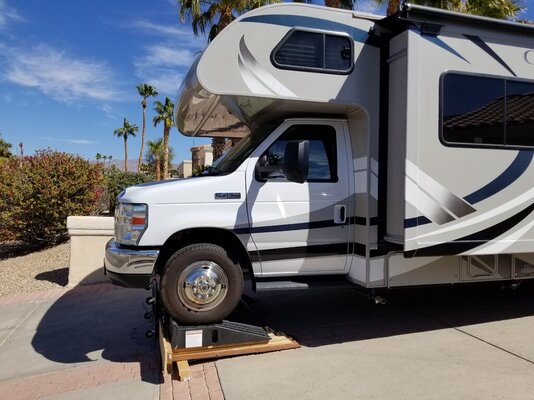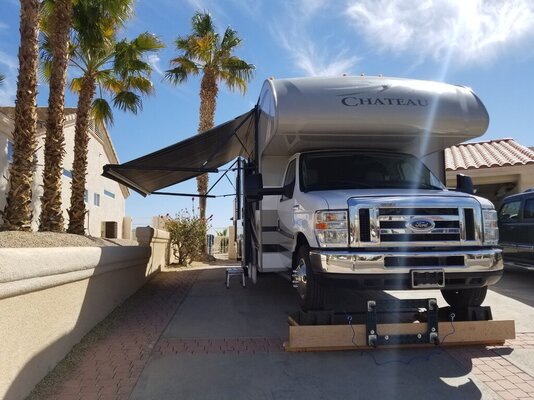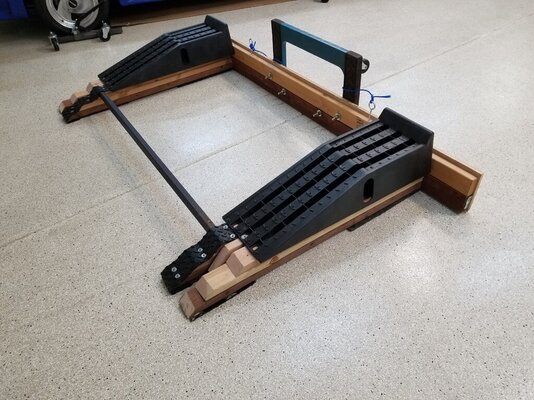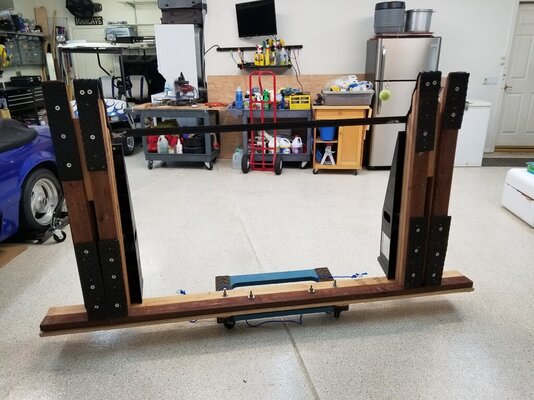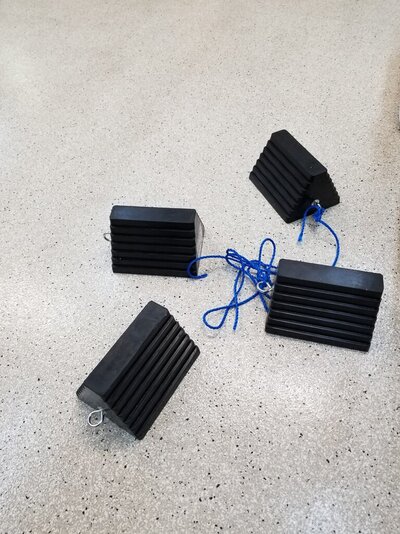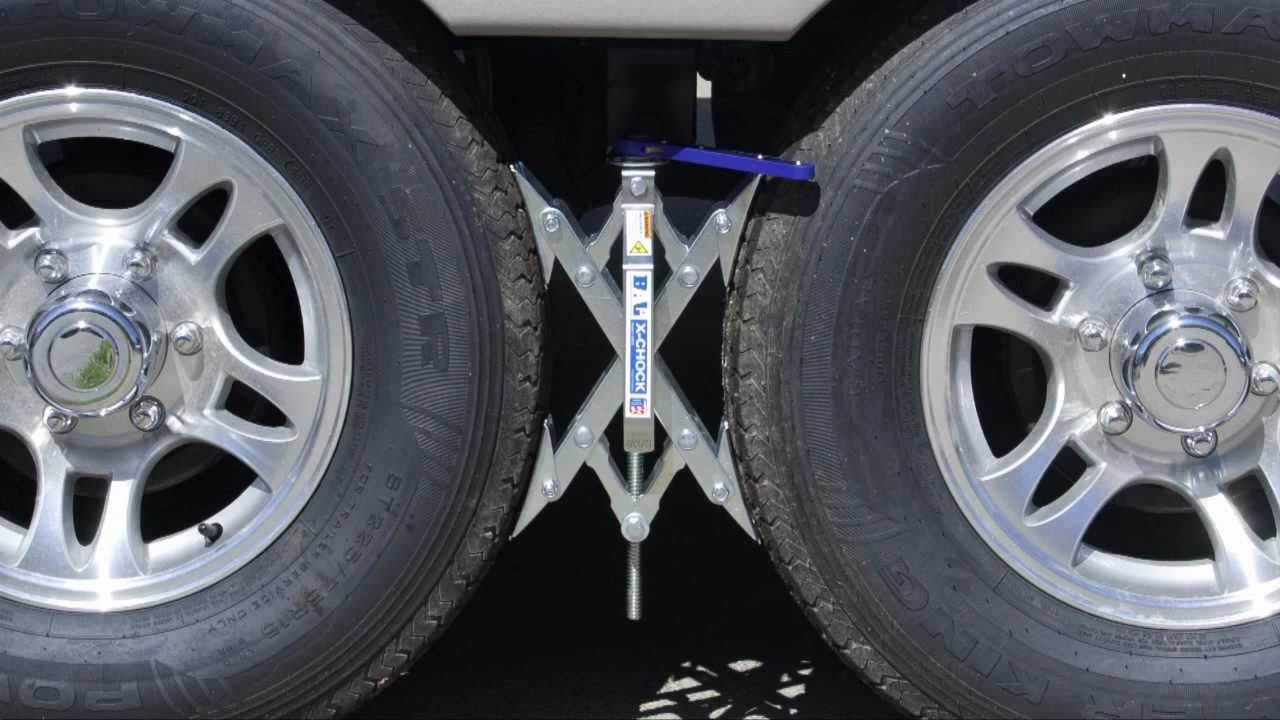Altazi
Active member
Hello All,
I am new to this forum, and I am looking to get a travel trailer. The maximum overall length must be less than 26 feet, so it will fit in my driveway. I do not wish to be stuck paying to park it elsewhere.
My driveway has a 5.66 degree slope down towards my garage. I would prefer not to have the trailer roll down hill into the garage, garage door, eaves, etc. I have been thinking about how to construct a robust means of preventing the trailer from rolling downhill past a particular point. Also, I have some leveling to do - the driveway has a slight slope (2") from one side to the other, so I would need to equalize the height in the sideways direction so the trailer will sit level.
I was thinking that the best way to prevent the trailer from rolling is to use some sort of wheel chock that is attached to some flat material, so the trailer's weight helps keep the chock from slipping. Also, I could use more of the flat material on one side to achieve the sideways leveling. When thinking of robust materials, Hardiebacker boards came to mind. They are sturdy and waterproof. These are shown in the drawing below as 'ramp material'. The wheel chock material is not yet determined, but it would need to be firmly attached to the Hardiebacker boards. I estimate < 600lbs of shear force on the chock.
In the drawing below, things are sort of crunched. In reality, there should be space for two trailer tires sitting on the ramp. The driveway slope and the ramp material thickness are exaggerated for illustrative purposes.
Does this look workable? Are there better materials to use? Is there an existing product that would work better?
Thanks in advance!
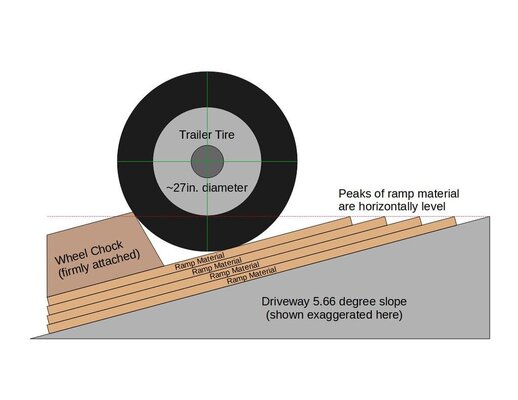
I am new to this forum, and I am looking to get a travel trailer. The maximum overall length must be less than 26 feet, so it will fit in my driveway. I do not wish to be stuck paying to park it elsewhere.
My driveway has a 5.66 degree slope down towards my garage. I would prefer not to have the trailer roll down hill into the garage, garage door, eaves, etc. I have been thinking about how to construct a robust means of preventing the trailer from rolling downhill past a particular point. Also, I have some leveling to do - the driveway has a slight slope (2") from one side to the other, so I would need to equalize the height in the sideways direction so the trailer will sit level.
I was thinking that the best way to prevent the trailer from rolling is to use some sort of wheel chock that is attached to some flat material, so the trailer's weight helps keep the chock from slipping. Also, I could use more of the flat material on one side to achieve the sideways leveling. When thinking of robust materials, Hardiebacker boards came to mind. They are sturdy and waterproof. These are shown in the drawing below as 'ramp material'. The wheel chock material is not yet determined, but it would need to be firmly attached to the Hardiebacker boards. I estimate < 600lbs of shear force on the chock.
In the drawing below, things are sort of crunched. In reality, there should be space for two trailer tires sitting on the ramp. The driveway slope and the ramp material thickness are exaggerated for illustrative purposes.
Does this look workable? Are there better materials to use? Is there an existing product that would work better?
Thanks in advance!


